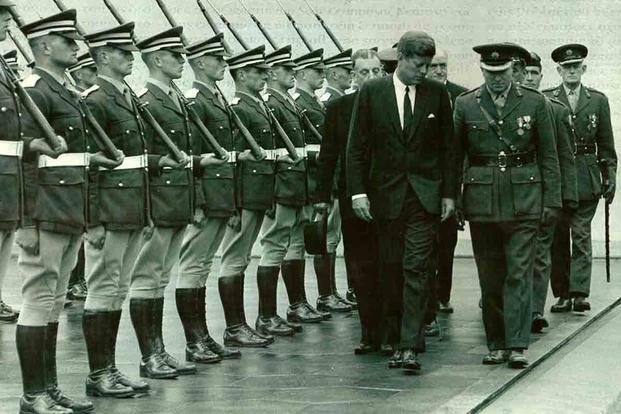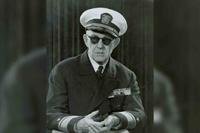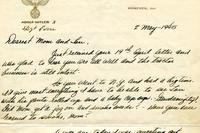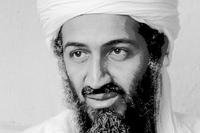On Nov. 25, 1963, President John F. Kennedy's flag-draped coffin was removed from where it lay in state at the Capitol rotunda. First, it stopped at the White House to join Kennedy's funeral procession on its way to St. Matthew's Cathedral for the funeral service. From there, a horse-drawn caisson carried the coffin to the president's final resting place in Arlington National Cemetery.
More than 250,000 people paid their respects to the fallen president before he was laid to rest. Among the mourners were former first lady Jacqueline Kennedy and other members of the Kennedy family, former Presidents Harry S. Truman and Dwight D. Eisenhower, and representatives of some 90 countries.
American military personnel protected Kennedy's remains from the moment he arrived in Washington from Dallas until his coffin was lowered into the ground. But when the funeral procession arrived at Arlington, it was also greeted by a unit of the Irish Defence Forces, which was conducting a silent drill, standing closer to the grave than any other military personnel, except the honor guard.
It would be the only state funeral in American history to feature a foreign military unit.

The reason why an Irish Army unit drilled as mourners walked to the gravesite starts in June of that year, when Kennedy became the first sitting American president to visit Ireland. He spent four days there, visiting Dublin, Cork, Galway, Limerick and his family's ancestral home in Wexford. While in Dublin, he stopped at Arbour Hill Prison, which features a memorial to the 14 Irish leaders of the 1916 Easter Uprising, an armed Irish revolt against British rule, who were executed by the British Army.
Placing a wreath on the memorial, Kennedy became the first foreign head of state to honor those executed in the aftermath of the uprising. The memorial ceremony included an Irish Army band and Irish Army Cadets performing the Queen Anne Drill, a complex maneuver that requires discipline and precision. Kennedy would later remark that the cadets' performance at Arbour Hill was the highlight of his entire trip, declaring it "the finest honor guard I have ever seen."
After Kennedy's assassination in Dallas, the cadets had accompanied Irish President Éamon de Valera at the request of former first lady Jacqueline Kennedy to represent the late president's Irish ancestry at his funeral and perform the drill that impressed him so much.
Kennedy's road to his final resting place was paved with martial support. When his body was returned to Washington to lay in repose in the East Room of the White House, it was guarded first by the Old Guard, the members of the 3rd Infantry Regiment responsible for protecting the Tomb of the Unknown Soldier. Because of Kennedy's interest and admiration for U.S. Special Forces, his brother, Attorney General Robert Kennedy, had Special Forces soldiers from Fort Bragg flown to the capital for the president's honor guard at the White House. U.S. military installations around the world fired a salute every half-hour of daylight on Nov. 23, 1963 -- the day after the assassination.
From the time the president's body was moved from the White House to the Capitol Rotunda until his coffin was interred at Arlington National Cemetery, American military forces from all four branches of service accompanied him. Two hundred and forty members from each branch formed the honor cordon as Kennedy's coffin moved along Pennsylvania Avenue, the only sound being one drummer from each branch and the hooves of the caisson, the same one that carried President Franklin Roosevelt and the Unknown Soldier.
Navy enlisted troops served as pallbearers for Kennedy's coffin. The ceremonial riderless horse following the caisson was the 3rd Infantry's famous Black Jack, which performed the function at more than 1,000 funerals, including those of former Presidents Herbert Hoover and Lyndon B. Johnson, as well as Douglas MacArthur. When Black Jack was retired, Jacqueline Kennedy purchased him from the Army and cared for him until he died in 1976.
Because of the number of people and cars attending the funeral at Arlington National Cemetery, most of the military personnel only followed the funeral procession to the Potomac River. When the mourners arrived at Kennedy's grave, the 26 cadets from the Irish Defence Forces were already there, performing the Queen Anne's Drill. Standing before the grave and closer than any American unit, they weren't the same cadets Kennedy had seen earlier in the year, but they were as sharp and precise as Kennedy had seen them.
No one complained about the Irish soldiers' special position at the funeral. As a matter of fact, letters from Americans began to pour in not long after the cadets returned to Ireland.
"Your honor guard made me feel proud to tears," wrote Frank Gulland, a salesman from Ohio, The Associated Press reported ahead of the 50th anniversary of Kennedy's funeral.
"It was a huge honor; we were very conscious that we weren't representing our country," recalled now-Col. William Mott of the Irish Defence Forces, who performed with the cadets that day. "We are representing the Defence Forces in Ireland, and Ireland wasn't a big player in the world then. And we were determined to do a good performance and I think, I think in the end, we probably did that."
Upon returning to Ireland, the cadets received a gift from the Old Guard at Fort Myer, a framed photograph of their honor guard standing at attention at Kennedy's grave. It still hangs in the cadet mess hall to this day.
Want to Learn More About Military Life?
Whether you're thinking of joining the military, looking for post-military careers or keeping up with military life and benefits, Military.com has you covered. Subscribe to Military.com to have military news, updates and resources delivered directly to your inbox.
















